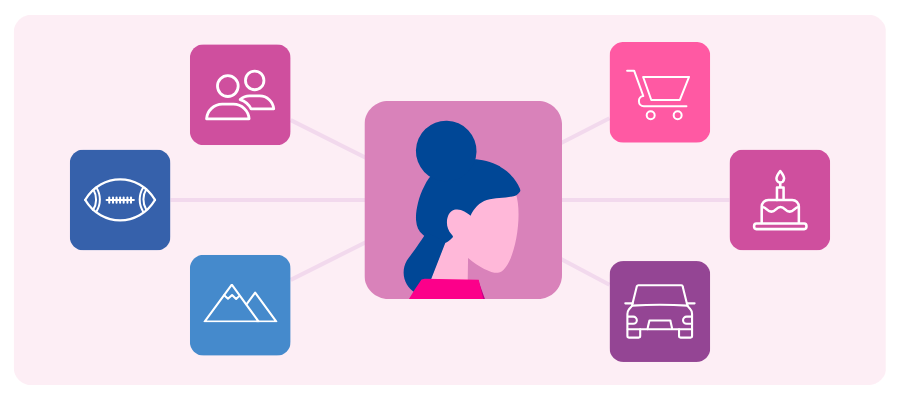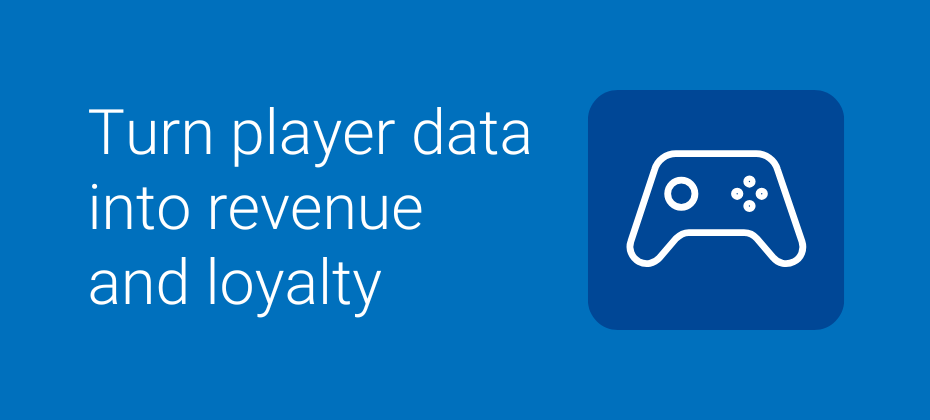At A Glance
Third-party data has moved from a fast-growth, loosely governed environment into one defined by trust, transparency, and compliance. Marketers are now looking for partners with institutional experience and rigorous data standards—not opportunistic providers chasing short-term gains. The brands that win will treat responsible data sourcing as the foundation of their customer strategy.How third-party data has changed and why it matters in 2025
For years, third-party data operated in an expansive, lightly regulated marketplace: fast-moving, high-growth, and filled with players eager to capitalize on digital marketing’s demand for audience insights.
That era is over. Regulatory scrutiny, stricter compliance standards, and rising consumer expectations have already transformed the market. Today, third-party data belongs to partners with proven expertise and built-in compliance. This isn’t a space for opportunistic newcomers; it’s one that rewards long-term commitment and trust.
Even the rapid rise of retail media networks (RMNs) reflects this shift. These platforms are built on long-standing, trusted relationships between brands, retailers, and data partners, utilizing that foundation in new ways to reach audiences responsibly and effectively.
The best providers have already made this transition; those still “shifting” are catching up.
From growth to governance: A market defined by accountability
The third-party data ecosystem has matured. After years of rapid expansion and recalibration, the market has stabilized around a new standard: data quality and regulatory accountability.
Third-party data enriches first-party insights with attributes such as income, gender, and interests that round out the customer view. But when the industry grew unchecked, unreliable providers diluted quality and trust. This resulted in a decline in the overall value and reliability of the third-party data marketplace.

That breakdown led directly to today’s privacy laws, now active across more than 20 U.S. states and numerous countries worldwide. These regulations reflect a permanent consumer expectation: relevance delivered responsibly. Consumers aren’t rejecting personalization; they’re rejecting how it’s been done in the past. They still want relevant, tailored experiences, but they expect brands to deliver them through ethical, transparent data practices.
Does third-party data still matter in a privacy-first era?
Third-party data isn’t disappearing, if anything, it’s become more important. Brands will always need additional insight to deepen customer understanding; first-party data alone only reflects what’s already known.
The industry has entered a mature phase where data quality and compliance are table stakes. The companies leading today built their data infrastructure on rigorous standards, regulatory foresight, and transparent governance.
That same foundation powers the next wave of innovation, including the explosive growth of RMNs. RMNs rely on responsibly sourced third-party data to enrich shopper insights, validate audiences, and extend addressability beyond their own walls. Trusted data partners make that expansion possible, connecting retail environments with broader media ecosystems while maintaining privacy and accuracy.
High-quality, compliant third-party data remains essential because it:
Advancements in AI and machine learning are reshaping how this data is used across the ecosystem. What was once primarily a buy-side tactic is now expanding into the sell-side, where publishers and platforms are using data to curate, package, and activate audiences more intelligently. As AI enhances modeling accuracy and automation, third-party data will play an even greater role in connecting brands and consumers in more meaningful, privacy-conscious ways.
The bottom line: it’s not about having more data; it’s about having better, verified data you can trust.
How can you spot a trustworthy data partner?
The strongest third-party data partners demonstrate accountability through experience, infrastructure, and integrity.
Look for providers that:
Why the future of third-party data depends on accountability
The third-party data industry has already crossed the threshold from expansion to accountability. The companies leading this era have established their credibility through governance and proof. The future belongs to providers that:
- Build with regulatory foresight
- Maintain rigorous quality assurance
- Prioritize partnership over profit
The Wild West days are long gone. The third-party data ecosystem is now defined by stability, transparency, and shared responsibility.
Partner with Experian for data you can trust and results you can prove
When accuracy and accountability define success, you need a partner built on both. Work with the company that’s setting the standard for responsible data-driven marketing and helping brands connect with people in meaningful, measurable ways.
Get started
About the author

Jeremy Meade
VP, Marketing Data Product & Operations, Experian
Jeremy Meade is VP, Marketing Data Product & Operations at Experian Marketing Services. With over 15 years of experience in marketing data, Jeremy has consistently led data product, engineering, and analytics functions. He has also played a pivotal role in spearheading the implementation of policies and procedures to ensure compliance with state privacy regulations at two industry-leading companies.
Third-party data FAQs
Third-party data is information collected by organizations that don’t have a direct relationship with the consumer. It supplements first-party data by adding demographic, behavioral, and interest-based insights.
Privacy regulations are reshaping data practices because consumers expect control over how their information is used. That expectation led directly to today’s privacy laws, now active across more than 20 U.S. states and numerous countries worldwide. These regulations reflect a permanent consumer expectation: relevance delivered responsibly. Consumers aren’t rejecting personalization; they’re rejecting how it’s been done in the past. They still want relevant, tailored experiences, but they expect brands to deliver them through ethical, transparent data practices. Laws like the CCPA and state-level privacy acts enforce this expectation, holding brands and data providers accountable for the ethical use of data.
Yes, brands can still use third-party data safely when sourced responsibly. Partnering with established, compliant providers like Experian ensures both legal protection and data accuracy.
Experian adheres to a set of global data principles designed to ensure ethical practices and consumer protection across all our operations. At Experian, privacy and compliance have long been built in. Every partner and audience goes through Experian’s rigorous review process to meet federal, state, and local consumer privacy laws. Decades of experience have shaped processes that emphasize risk mitigation, transparency, and accountability. Experian’s relationships with demand-side platforms (DSPs), supply-side platforms (SSPs), and even social platforms like Meta, ensures we are aware of any platform-specific initiatives that may impact audience targeting. We’re also active participants in many trade groups to ensure that the industry puts ethical data practices in place to ensure consumers still receive personalized experiences but their data usage and collection is opt-in, transparent and handled with their privacy at the center of the transaction.
Marketers should look for transparency, longevity, and evidence of compliance when looking for a data partner. The best partners can clearly explain how their data is sourced, validated, and maintained. Read Experian’s guide on how you can swipe right on the perfect data partner here.
Latest posts

Gaming companies sit at a unique crossroads: they’re part entertainment powerhouse, part tech platform, part media company. Whether you’re publishing blockbuster titles, running a mobile game network, or building immersive in-game ad experiences, you have access to vast amounts of player data—and massive potential for growth. What's standing in the way of growth and loyalty Video game publishers and platforms are increasingly turning to data to understand, engage, and retain their players. But that’s easier said than done. Here are the top challenges they face: Data lives in silos. Gaming companies often collect data across multiple platforms—console, PC, mobile—but can’t stitch together a full view of the player across devices and titles. Identity is hard to resolve. Players interact across games, apps, websites, and platforms. It’s tough to connect all those signals and create a consistent, personalized experience. Privacy is non-negotiable. Regulations are tightening. Any solution must not only be powerful—it must be privacy-safe. Ad performance is difficult to measure. It’s often unclear which campaigns are driving engagement, conversions, or purchases—especially across fragmented digital touchpoints. How Experian can help you win with data and identity Experian helps gaming companies stop leaving value on the table. We turn scattered player data into a single, unified view—giving you the foundation to better understand and engage your players. Our approach: Organize, enrich, activate 1. We clean and unify your data We help you build a solid identity foundation by resolving messy, duplicate, or outdated records across systems. That means your player data from mobile, console, PC, and web all connects—giving you a clear view of how your users engage across games and platforms. 💡 How it’s working: A global interactive gaming company is partnering with Experian to unify and enrich player profiles across systems—boosting the performance of both player engagement campaigns and in-game monetization strategies. 2. We deliver deep customer insights With Experian, you go beyond surface-level data. We help you understand player behaviors, financial attributes, interests, and lifestyle factors—fueling more personalized experiences, smarter segmentation, and better monetization strategies. 💡 How it’s working: A major game developer used Experian’s data enrichment tools to gain deeper insights into player behavior and financial attributes—enabling more personalized in-game offers, smarter audience segmentation, and stronger player retention. 3. We enrich profiles and help you activate across channels We enhance your player records with hundreds of attributes—so you can create custom segments that work. Then, we help you activate those audiences in real-time across digital, social, and programmatic platforms. 💡 How it’s working: A global gaming publisher used Experian to build custom audiences and activate across programmatic channels, driving higher in-game engagement and ad ROI. Turning audiences into ad revenue In addition to improving their own player marketing, gaming companies are unlocking a second growth engine: ad revenue from non-endemic brands. Much like retail media networks, game publishers and platforms are realizing the value of their audience data. From airlines and automakers to QSR and CPG brands, advertisers are taking notice of the high-value, high-intent audiences inside game environments. But to attract that ad spend, publishers need to offer more than impressions—they need precise audience targeting, cross-device identity, and reliable measurement. How Experian helps drive better ad performance To appear authentically to a gamer, you need to know who they are and what they care about. Experian helps marketers understand a person’s behaviors and preferences to enable relevant, personalized advertising. And since nobody wants to see the same ad ten times during a session, we help manage ad frequency across devices and placements to protect the player experience. Our approach: Extend reach, measure results 1. We expand your digital reach Experian makes it easier to find and connect with your players wherever they are—across devices, platforms, and publishers. We help you build scalable audiences you can reach programmatically and with precision. 💡 How it’s working: Unity, a leading gaming platform, is redefining the way marketers reach their audiences across major and emerging channels. They’ve tapped into Experian’s syndicated audiences to gain player insights and help advertisers connect with gaming audiences across mobile, web, and connected TV (CTV) based on behaviors and preferences. 2. We help you measure what matters Whether your goal is app installs, in-game purchases, ad engagement, or player retention, we help connect the dots. You’ll know which campaigns are driving action—and where to double down. 💡 How it’s working: A leading global game publisher is working with Experian to enrich player profiles, build and activate audience segments, and measure how campaigns drive in-game engagement and purchases—giving them a clearer view of ROI across digital channels. Why choose Experian Whether you’re trying to build stronger player relationships or turn your audience into a high-performing advertising engine, Experian gives you the data and identity foundation to make it happen. We help you: Organize and clean your player data Resolve identities across digital touchpoints Enrich your data with deep, actionable insights Build and activate target audiences Measure impact across the player journey Let's power up together We’re already supporting leading brands across the gaming ecosystem—from global game publishers and mobile app developers to in-game ad networks and gaming platforms. And we’re ready to help more companies harness the full power of their data. Get in the game with us 🎮 Latest posts

As a programmatic media partner for marketers and agencies, MiQ’s mission is to ensure their clients’ media investments are spent on the right audiences in the right environments. MiQ needed a stronger way to unify audience insights, increase scale, and improve efficiency amidst signal loss. To meet this challenge, MiQ integrated Experian’s Digital Graph into their Identity Spine, creating a more comprehensive view of their clients’ target audiences and ensuring their data-driven solutions remain effective, regardless of the signal source or identifier in use. What is Experian's Digital Graph? Experian’s Digital Graph is like a puzzle, connecting billions of digital identifiers to create a complete view of consumers. As signal loss makes targeting harder, our Digital Graph helps marketers stay connected by linking cookies, mobile ad IDs (MAIDs), hashed emails (HEMs), IP addresses, connected TV (CTV) IDs, and universal IDs, like Unified ID 2.0 (UID2) and ID5. We put the pieces together, matching first-party data to a variety of digital IDs for better targeting, measurement, and cross-device insights—so you don’t have to. Challenge: Strengthen targeting capabilities amidst signal loss MiQ needed to stay agile in its strategy and partnerships to ensure digital connectivity amidst ongoing signal loss. To maintain campaign performance and scale, MiQ sought privacy-first partners they could integrate into their Identity Spine. MiQ’s primary objectives included: Strengthen audience targeting across all digital environments, with or without cookies. Reach target audiences in privacy-compliant ways. Maintain or increase the scale — even as reliance on cookie-based targeting declines. The solution: Integrating Experian's Digital Graph into MiQ's Identity Spine MiQ incorporated Experian’s Digital Graph, licensing HEMs, UID2s, and third-party partner cookies, into their proprietary Identity Spine. MiQ’s Identity Spine seamlessly connects over 60 cookieless data feeds and 25 ID solutions. “Experian’s Graph has bolstered our already comprehensive, multi-ID Identity Spine with incredible data on cross-device ownership and cross-channel behavior.”Georgiana Haig, Strategy and Partnerships Director, MiQ Results: MiQ expanded the reach and scale of their Identity Spine The integration of Experian’s Digital Graph with MIQ’s Identity Spine enabled marketers to find, grow, and measure customers across screens even as signal loss evolves and traditional identifiers fluctuate. The integration allowed MiQ to: Create a unified view: MiQ now has a unified view of its clients’ target audiences, enhancing their audience understanding with the addition of 6.5 devices to each matched IP address, enhancing scale and targeting capabilities. Increase scale: By matching first-party data to multiple universal IDs, MiQ expanded its reach across devices, contributing to a 51% increase in seed audience reach and and a 64% increase in reaching using universal IDs. Improve efficiency: The combination of Experian’s data with MiQ’s Identity Spine improved cross-device ID resolution, leading to more accurate measurement and reporting with a 70% match rate in associating MiQ-provided IP addresses with universal IDs. Stay connected to your audience despite signal loss with Experian MiQ’s Identity Spine stays strong through their partnership with Experian, keeping audience targeting effective even as signal loss changes the landscape. Download the full case study to learn more about how Experian’s Digital Graph enabled MiQ to strengthen audience targeting despite ongoing signal loss. Download the full case study Contact us About MiQ MiQ is a global programmatic media partner for marketers and agencies, with 19 offices across Europe, North America, and the Asia-Pacific region. They specialize in connecting data from multiple sources to solve business problems for their clients. They are award-winning experts in data science, analytics, and programmatic trading, focused on ensuring clients’ media investments are spent on the right audiences in the right environments. To learn more, please visit www.wearemiq.com. Latest posts

Summer may be vacation season for consumers, but it's go time for marketers. Between holiday weekends, travel season, and changing shopping habits, the pressure is on to deliver campaigns that land and convert. If you're feeling behind, you're not alone. Many marketers face the same challenge every year: How do you actually use the customer data you have to fuel high-impact, seasonal marketing? And how do you ensure your brand shows up in front of the right people in the right place before the competition beats you to it? That’s where Experian comes in. With Experian’s advanced Audience solutions, you can get ahead of the trends, connect with vacation-ready shoppers, and optimize performance across digital, TV, and retail media using customer data for seasonal marketing. Capitalize on vacation excitement to drive sales and growth Summer travel often triggers a surge in pre-trip spending. Surveys show that 82% of consumers plan to travel this summer, and according to Fortune, today’s travelers spend thousands of dollars on things like luggage, apparel, and recreation gear before they even leave their homes! But while consumer demand is heating up, so are the challenges. Marketers are navigating a turbulent economic environment shaped by shifting demand curves, tighter budgets, the rising cost of goods, and supply chain disruptions caused by newly imposed tariffs. These pressures are forcing teams to rethink everything from product positioning to pricing strategies. In this climate, it’s more important than ever to maximize performance, reduce waste, and stay laser-focused on reaching high-intent audiences likely to convert. Using customer data for seasonal marketing helps brands predict and capture demand with precise, relevant targeting. Whether your customers are planning a trip to the beach or hiking the Rockies, timely messaging and audience alignment can drive engagement and conversion. Experian Audiences power effective audience strategies But even the most compelling campaigns can fall flat if you're working with incomplete data, outdated segments, or generic targeting. Consumer data providers like Experian can help you fix that. Our Audience solutions help you go beyond assumptions and truly understand who your shoppers are, what they’re planning, and how they behave, so you’re ready to get in front of their summer plans. Six steps to creating a successful seasonal marketing campaign When you’re ready to turn summer intent into strategy, Experian Audience solutions help you translate vacation-driven behaviors into high-performing campaigns. Each product in the Experian Audience suite supports a specific stage in seasonal marketing planning and execution. 1. Define your goals Before diving into channels and creatives, get clear on your customer database marketing goals. Are you trying to increase online purchases? Drive in-store traffic? Expand brand awareness? Use Syndicated Audiences to set fast, focused goals. If you’re short on time, Experian’s 2,400+ Syndicated Audiences give you a head start. These pre-built, behavior-based segments — from luxury travelers to seasonal sports enthusiasts — help you quickly identify who to target, where they spend time, and how to message to them. With segments ready to plug into 30+ activation platforms, you can ensure quick, confident activation. 2. Decide what data you need and which audiences to target Using customer data for seasonal marketing means mapping behavior to intent. This core tactic in customer database marketing can help you drive deeper engagement. Our data solutions simplify the process, whether you’re starting with limited data or already know your best customers. If you’re starting with a list, Enrichment can append lifestyle, income, and travel preference data to help you understand what motivates your existing customers. If you don’t have a list, Marketing Attributes gives you full control when building new audiences or lookalikes based on relevant seasonal traits like beach vacationers or frequent CTV watchers. 3. Identify key holidays and events Summer is full of shopping triggers: Memorial Day, Father’s Day, Fourth of July, Labor Day, and countless local and regional events. However, not every customer behaves the same way. Use Enrichment to understand when your customers are most likely to act. By comparing your first-party data to broader market segments, you can time promotions more strategically. For instance, enrichment might reveal that outdoor gear buyers convert in early June, while luxury travelers plan closer to July. 4. Activate across digital, TV, and retail media Summer shoppers don’t stick to one screen. They’re streaming TV, reading travel blogs, browsing retail apps, and catching up on email — often from a beach chair or airplane seat. That’s why omnichannel delivery is a must, and it’s where consumer data vendors like Experian can help you reach your audience across channels with targeted messaging for key holidays and events: Syndicated Audiences simplifies omnichannel activation with built-in integrations to 30+ leading activation platforms. These pre-mapped segments let you deliver consistent messaging across the places where your audience is most engaged. Looking for privacy-forward reach? Contextually-Indexed Audiences are segments built by linking real-world behavioral data to the types of content those audiences typically consume online, allowing you to activate based on content instead of identity while offering a more contextually relevant experience. Using customer data for seasonal marketing, Experian maps real audience segments across web and app environments — like national park guides and travel blogs — for ID-free precision targeting in a cookieless environment. 5. Track and evaluate performance Don’t wait until the end of the campaign to make changes. Experian’s measurement tools help you track performance in real time, so you can optimize early and often. Measure how well specific audiences — enriched, syndicated, or contextual — are performing across platforms and use those insights to shift spend toward top performers. 6. Optimize and refine your strategy After the season ends, it's time to take what you’ve learned and build smarter for the next push. Use Outcomes to analyze: Who converted Which segments underperformed How your customer base compares to the broader market How your audience evolved Which campaigns drove meaningful adoption These insights can then inform your next round of audience building, so whether it’s back-to-school or a holiday, you’re already ahead. Example 1: The beach vacation shopper To illustrate Experian’s Audience solutions at work, let’s say a high-end swimsuit brand wants to reach women over 30 planning beach vacations to Florida, Hawaii, or Mexico. However, their CRM only includes basic transaction and purchase details and offers little insight into who their customers are. Audience solution: Enrichment Using Experian’s Enrichment solution, the brand could layer on lifestyle, income, and travel preference data to turn shallow profiles into rich audience segments. With a deeper understanding of their shoppers, the brand could develop a targeted messaging strategy by destination, build high-performing lookalike audiences, and confidently activate across channels. Example 2: The European traveler As another example, suppose a footwear brand wants to reach millennial travelers heading to Europe between May and August. They specialize in stylish, comfortable walking shoes that are ideal for travel but lack the technical in-house resources to build custom segments. Audience solution: Syndicated Audiences Using our Syndicated Audiences, the brand could easily tap into pre-built segments tied to leisure travelers, international shoppers, and comfort-focused footwear buyers. With plug-and-play access to over 2,400 verified audience segments, the brand could quickly layer this targeting into their programmatic and paid social campaigns without requiring custom development. And with fast speed-to-market and improved message relevance, the brand could launch cross-channel campaigns just in time for peak summer travel planning. Example 3: The outdoorsman Consider a camping tent company that wants to reach families planning summer trips to national parks, campgrounds, or RV resorts. They don’t have much first-party data to work with, but they know their audience is online, researching their next adventure. Audience solution: Contextually-Indexed Audiences With Experian’s Contextually-Indexed Audiences, the brand could target people actively reading content about outdoor travel (like hiking tips, campground reviews, or road trip itineraries) without relying on cookies or IDs. They’d be able to activate contextually relevant audiences mapped to sites that outdoor enthusiasts frequent and drive site traffic with strong click-through rates. Example 4: Big-box retailer launching summer gear Imagine a national retailer preparing to promote summer essentials like patio furniture, grills, fitness gear, and travel accessories. Their goal is to build predictive models for their summer product demand and reach new customers most likely to buy before they even search. Audience solution: Marketing Attributes With Experian’s Marketing Attributes, the retailer could license over 5,000 lifestyle, demographic, and behavioral variables to enrich internal models and uncover high-indexing consumer groups, such as outdoor entertainers or health-conscious families. This data-powered insight would help them predict demand and identify audience segments worth testing across media channels. The team could find new, qualified segments ideal for email and CTV activation and get a head start on the season, eventually increasing ROI on their summer campaign spend. Talk to Experian about your summer campaigns today Using customer data for marketing doesn't have to be overwhelming, especially when you have access to a trusted consumer data provider and plug-and-play audience tools for every stage of the funnel. Whether you’re working with a robust CRM or starting fresh, consumer data vendors like Experian can help you reach the right audiences with speed, accuracy, and confidence. Our advanced tools are designed for both advanced marketers and teams just beginning to explore consumer database marketing. No matter your goals, Experian is here to help you build an audience strategy that performs. Contact us today Latest posts







